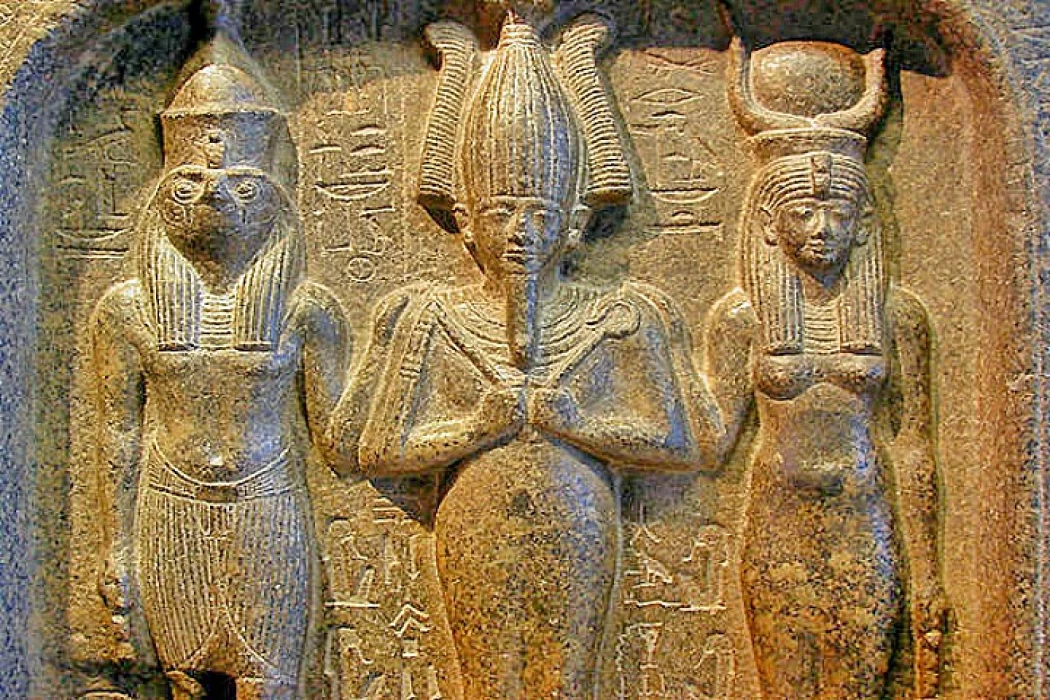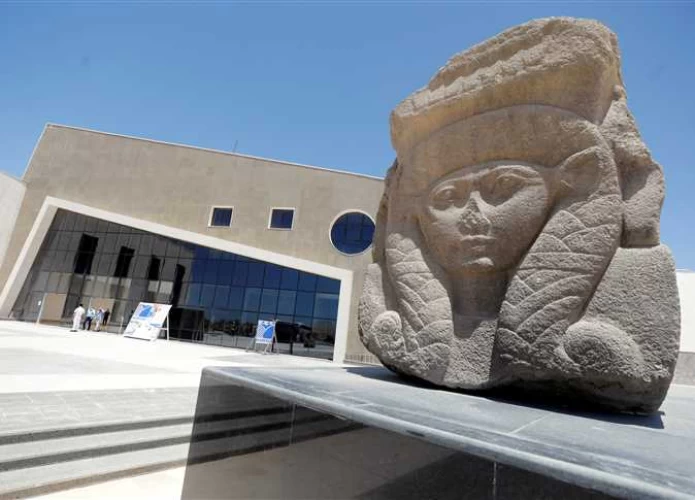
Osiris's Myth | The Tale of Isis and Osiris
Osiris's Myth
Who is Osiris? Osiris, who was formerly the deity of growth and fertility, forced himself on all of "the Black"—the term the Egyptians gave to their homeland. He usually wears the ourerèt crown (the white mitre of Upper Egypt, flanked by two ostrich feathers), the heqa sceptre, and the flagellum, as well as a false beard. The son of Geb and Nut, he is the brother and husband of Isis. Osiris and Isis receive Egypt, to which they bring civilization. Osiris established himself as the archetypal sovereign and, as such, was associated with the royal person. During the Old Kingdom, Osiris was venerated in the sanctuaries of Abydos and Busiris.
Two of the most worshipped gods in ancient Egyptian mythology were Osiris and Isis. He ruled Egypt in a fair and successful manner as a wise and righteous monarch. He was a wise and just king, ruling Egypt fairly and prosperously. His wife, Isis, was famed for her magical abilities and deep knowledge.
Their story took on a tragic twist when Set, Osiris’s jealous brother, plotted against him. Set created an intricately carved sarcophagus trap to deceive Osiris into visiting it. After Osiris entered it, Set closed it off from the world and cast it on the Nile, where it was washed away by the waves, leaving Osiris dead.
Isis’ heart bled as she embarked on an unending quest to retrieve her lost husband; after some time, however, she found his remains using her formidable magic powers and aided by loyal friends. In spite of this tragedy, she performed acts that restored him to life through a series of elaborate rituals. While he returned to life again, he could no longer associate with mortals but instead became ruler of the underworld.
Horus, their son, who was destined to take revenge upon the death of Osiris, came out of Isis's womb. Horus grew up in order that he might confront Seth, only for him to be defeated, thereby allowing his father’s heritage to be restored. As such, this triumph reinstated balance and justice in the world.
The Osiris Myth
Osiris assumed the rule of the land and presented it to the people from the righteous; which made him an example of good and taught people to plant, and he planned for their villages and cities, and he legislated laws and rulings for them, and people loved him, so his brother hated him "Seth", and asked him himself to kill his brother.
He prepared set plans, to kill his brother Osiris, where he held a big party called by Osiris, then he told Seth's guests that he prepared a surprise for them, which is a gift sarcophagus, a gift from gold that would be the share of those who come identical to his size, and the successive guests were lying in the coffin until the turn of Osiris (which was prepared for him).
The coffin, in particular, took the coffin at its bed. Seth and his followers took the initiative to tighten the lid on the sarcophagus and inside it Osiris, then they carried it and threw it in the Nile River, so the river dredged it to the Mediterranean, which was carried by its waves to Phenicia (Lebanon now), then the waves threw it to the coast of Thaghr Jbeil and it soon became A huge tree planted on the coffin hidden it from the eyes
Isis was searching for her husband until God guided her to the city of Jbeil and found the coffin, and she remained there until she managed to escape the body of her husband, and she returned to Egypt, and in Egypt, Isis emptied the corpse in a remote location of the Delta swamps and started crying and praying to God to return life to her husband Osiris, and God answered her, and Isis set out with shouts of joy there and set who happened to be hunting near them soon heard her, as soon as he heard the sound until he rushed toward them, so if he finds his brother alive, then he will revolt, and tear his body Osiris, and throw every part of it in the regions of Egypt Forty-two.
The ancient Egyptians believed that "Osiris" is the force that provides them with life and gives them sustenance in this world, and that it is the black earth from which green life emerges, and they drew the ears of love sprouting from his body, symbolizing the renewed life with a green tree. Each year, they held a large party in which they installed a tree, planted and decorated it with ornaments, and covered it with green leaves, as people do today with the Christmas tree.
The Babylonians named this tree a tree of life, and they believed that it bore the leaves of age on the head each year. Whoever turns his paper green lives are written for him throughout the year, and whoever withers his paper withers and authorizes the fall is dead one day. This custom went from east to west, so they celebrated the tree at Christmas and chose it from trees that kept green throughout the year, such as cypress and pine.
Thanks to classic works of a book such as Plutarch, the myth was preserved even after the middle of the first millennium A.D when the ancient Egyptian religion and writing system that was originally used to record the legend disappeared. The legend remained part of the Western impression of ancient Egypt. And in recent times, when Egyptian beliefs were understood by Egyptian sources, the myth continued to influence and inspire new ideas, from fictional works and scientific speculation to new religious movements.
The Gods of ancient Egypt were very just like people according to ancient Egyptians, they had feelings, they felt jealous and fought, they took revenge, killed, and also died during an amazing myth full of joyful, action, and dramatic events that inspired modern movie directors and producers to create world-famous movies about the grandeur of the Pharaohs and the Gods they worshipped.
















